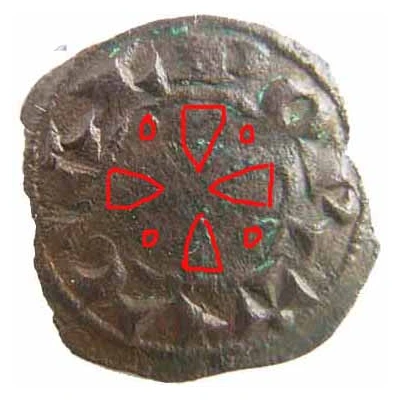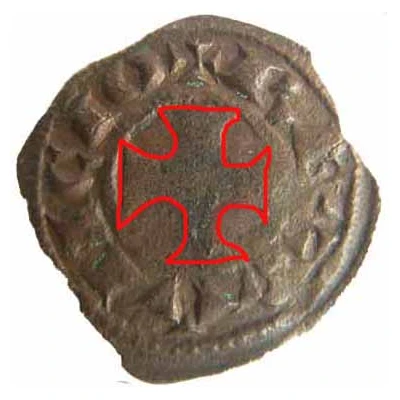


Obverse © A.Monge da Silva (CC0)
Mealha - Sancho I ND
| Billon (.083 silver) | 0.5 g | 15 mm |
| Issuer | Portugal |
|---|---|
| King | Sancho I (1185-1211) |
| Type | Standard circulation coin |
| Years | 1185-1211 |
| Value | 1 Mealha = ½ Dinheiro (0.5) |
| Currency | Libra (1st Dynasty, 1128-1383) |
| Composition | Billon (.083 silver) |
| Weight | 0.5 g |
| Diameter | 15 mm |
| Shape | Round (irregular) |
| Technique | Hammered |
| Demonetized | Yes |
| Updated | 2024-10-07 |
| Numista | N#40418 |
|---|---|
| Rarity index | 87% |
Reverse
Script: Latin
Lettering:
PORTVGAL
Variations:
PORTVGALI
PORTVGALENS
Comment
In the forals of the time, with regard to toll taxes, phrases such as: “Fish toll - 3 mealhas”, “...of skins 6 mealhas” can be found. Fernão Lopes(1418-1459) claims that they did not exist, and that people cut "Dinheiro" in half, and it was worth a mealha, which is after all half Dinheiro.In the many finds, an unusual number of half coins appears, which is not normal, and only reveals that the coins were actually broken in half as a form of payment.
If mealhas were to be minted, a practical problem would arise, since the diameter of the coins was not uniform: -How do you distinguish a "Mealha" with a slightly larger disc from one "Dinheiro" with a smaller disc?
Therefore, there is nothing to suggest that"Mealhas" were minted.
In neighboring kingdoms, during several reigns, Dinheiros and Mealhas (Obulos) with identical typology were minted. However, while the Dinheiros had diameters in the order of 16/18mm, the Mealhas were only 10/12mm.
Interesting fact
One interesting fact about the Mealha - Sancho I ND (1185-1211) coin from Portugal is that it was minted during the reign of King Sancho I, who was known for his efforts to strengthen the Portuguese economy and promote trade. The coin's unique blend of silver and other metals, known as billon, was a common practice during this time period and was used to create a durable and long-lasting currency. Despite its small weight of 0.5 grams, the coin was widely accepted and used in everyday transactions throughout Portugal, and its design featuring the king's name and title in abbreviated form, "SANCIO DEI GRATIA," serves as a testament to the coin's authenticity and historical significance.